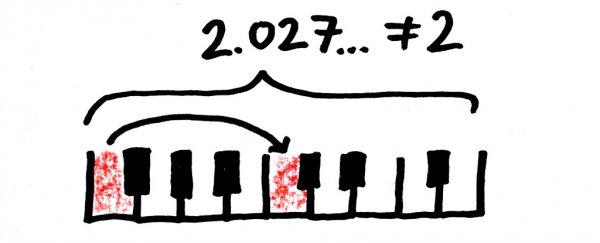There's an incredibly diverse range of musical instruments out there, from bassoons and tubas to harps and violins. But you might be surprised to learn that all of them produce their unique sounds in the same way - with either a string or air vibrating in a sine wave pattern to produce a specific note. That means musicians can use physics to perfectly tune their instruments… unless they play the piano, that is, and this episode of MinutePhysics explains why.
To understand the problem with pianos, you first need to understand how sine waves work to produce different notes. Take strings, for example. In a musical instrument, the strings are attached at each end to the instrument, which means they can only vibrate in certain wave patterns, known as sine waves.
Depending on how fast the string is vibrating, there can be one, two, three, four, or even more of these sine waves - or bumps - along a string at any one time. The more bumps there are, the faster the string has to vibrate, and the higher the pitch of the resulting note, as Henry from MinutePhysics explains above with some pretty cool calculations.
So why is that important? Well the different pitches produced by the various patterns of sine waves are called harmonics, and musicians can use them to perfectly tune their instruments. For example, on a violin, the third harmonic on one string should be equal to the second harmonic on the next string up. If these aren't identical, the violinist can tighten or relax one of the strings to change the frequency of the vibrations and get them to match up.
But that doesn't work for the piano, and this is why: it has too many strings. It has a string for all of the 12 semitones for the western scale, each attached to a different key. And that means if you try to tune the whole thing using harmonics, things are going to get out of whack.
We'll let Henry explain those calculations in the video, because they're a lot easier to understand when you can see them. But the short version is that it's mathematically impossible to tune a piano across all keys using harmonics.
Instead most people use what's known as equal tempered tuning to tune their pianos, as well as digital audio devices. And that works pretty well, but it's never going to be as accurate as harmonic tuning.
Watch the video above to find out why and see Henry break down the complex physics that produces the music we love. And if nothing else you can take away this cool fact: if you play a sound that matches one of the harmonics of a string, it'll cause that string to start vibrating all on its own. That's one you can try at home.
